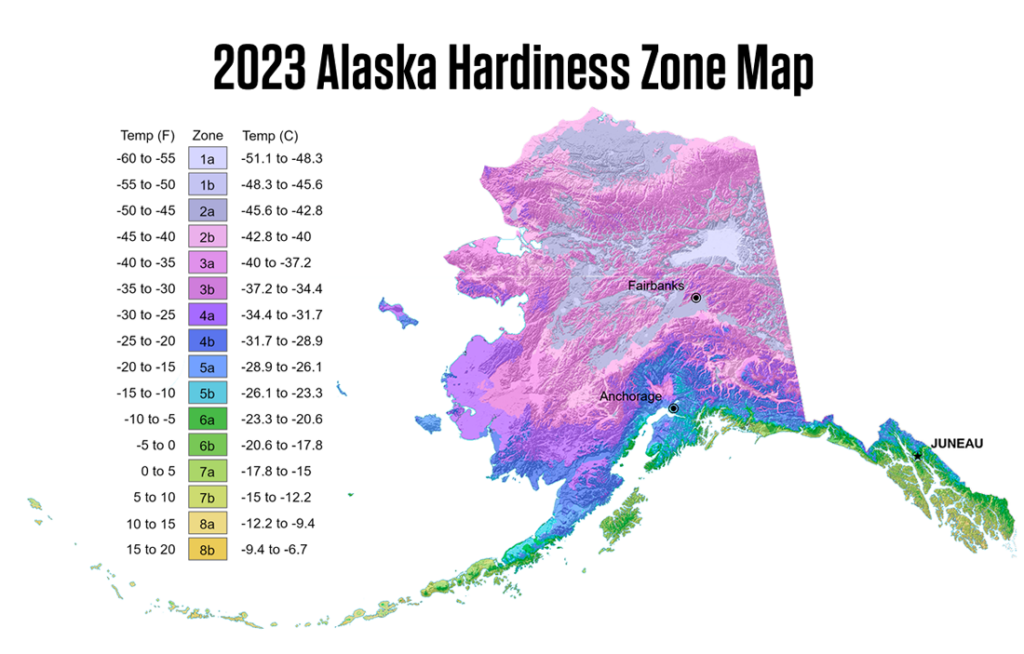USDA Plant Hardiness Zone Map

Gardeners and farmers, especially those in Alaska, are likely familiar with USDA’s Plant Hardiness Zone Map (PHZM), which is the standard for us to determine the perennial plants that are most likely to thrive in our home locations. For the past decade, our plant zones and varieties have been determined by a version of the PHZM developed in 2012…BUT…did you know there is a newly released version of this guide? The new map was unveiled on November 15th, 2023 as a joint venture between USDA and Oregon State University…AND…there are numerous observable distinctions for the state of Alaska!
Quoting the USDA directly, “the map is based on the average annual extreme minimum winter temperature, displayed as 10-degree F zones and 5-degree F half zones.” So for example, you could be located in a 3a zone which would have an average extreme minimum temperature of -40F to -35F, or in a 5b zone which has an average cold temperature of -15F to -10F. Remember, this is just a guide and is based on average extremes from 1991 to 2020, not annual extremes or individual weather events.
Overall, the 2012 and 2023 maps are on a much finer scale than the previous years with the weather versus climate impacts being sorted. Considerations such as cities being warmer than the countryside, higher elevations being colder, and the lake effect is taken into consideration as best as possible. Specifically for the newly released map, many zone boundaries have shifted and throughout most of the US, there has been about a one-quarter zone increase in warmth since 2012. The USDA specifically described that some of the changes are a result of additional data sources and improved interpolation methods. The most substantial changes are seen here in Alaska.
The PHZM from 2012 was at a zoning scale of 6.25 square mile blocks, but the new map zones Alaska down to 0.25 square mile sections. I mean c’mon this is so exciting and significantly improved! Additional weather stations and a new high-elevation data model have allowed for this improvement and specificity of agriculture in future years for our state.
Regardless of the reasoning, I think many of our homes have probably been officially moved into a warmer zone, although we may have already noticed that in our gardens. My mind obviously starts getting wildly excited about what new fruits might now be suitable and available for our region. What new agriculture things do these changes get you fired up about?
You should definitely go check out the map and its new widgets if you haven’t already yet:
https://planthardiness.ars.usda.gov/
Written by Nikira Lane, agAlaska Ag Tech Specialist


Comments are closed